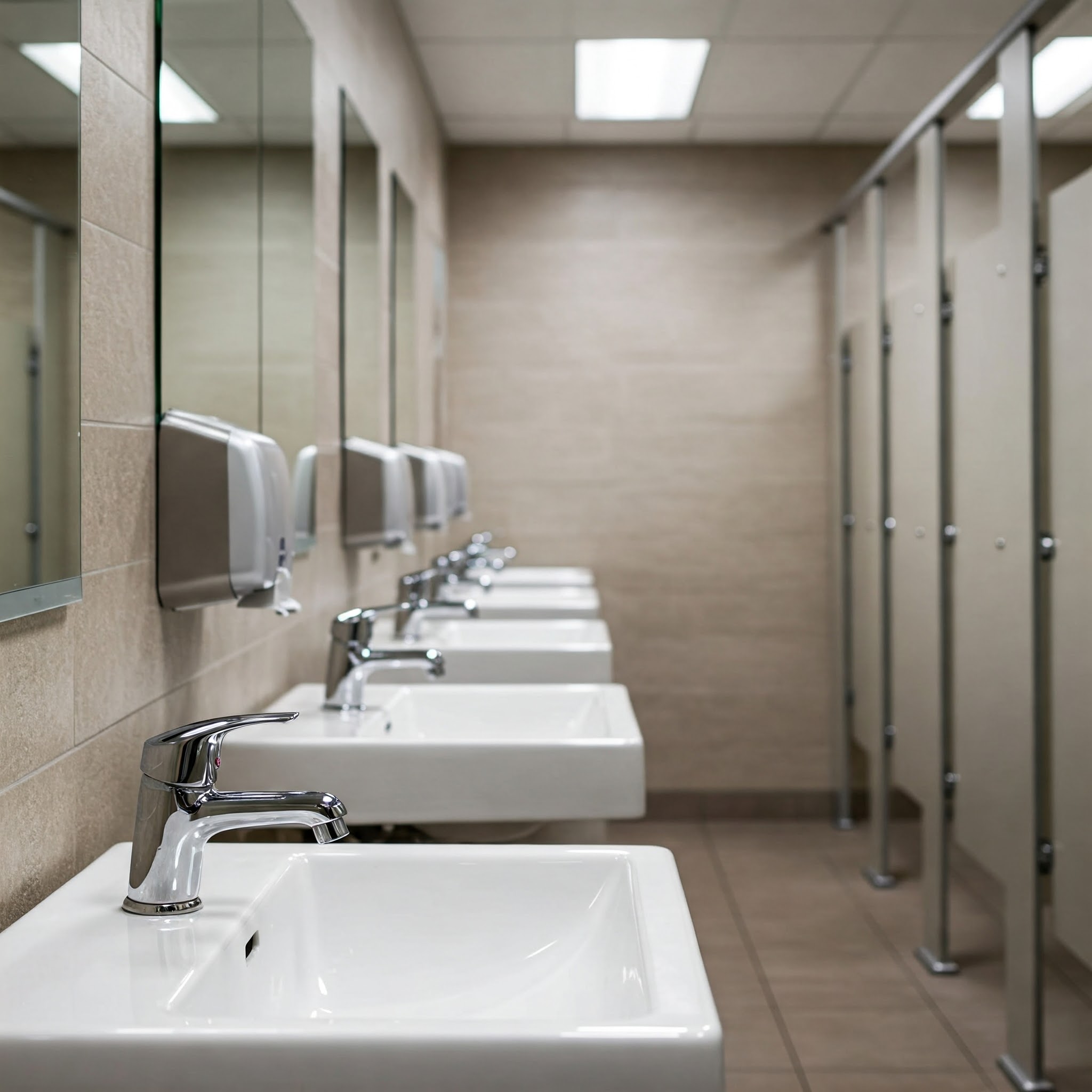The Need for Public Restrooms Affects All of Us
We all know the feeling: panic, a stress response, worry for ourselves, child or loved one, or humiliation and shame around having an accident. For many Americans, this isn’t just an occasional inconvenience—it’s a daily struggle.
Many people experience a constant anxiety about finding a restroom during everyday life known as “Restroom duress.” This is a term used to describe the challenges and discomfort individuals face when trying to find and use a restroom, particularly when it’s difficult or impossible to do so. Those who experience restroom duress include:
- Pregnant women
- Parents with young children
- Individuals with medical conditions like Irritable Bowel Syndrome, Ulcerative Colitis, or bladder cancer
- The Aging (Functional capacity is halved during aging process)
- People with seen or unseen disabilities, including those using wheelchairs
- Veterans with combat-related injuries or wounds
- 10 to 40% of stroke victims
- Otherwise healthy persons suffering bowel incontinence
- Parents touring with young children
- Children in school
- Menstruating people
- People suffering certain congenital defects
- People with bladder cancer
- Victims of abdominal or nerve trauma
- Women being treated for Vaginal Candidiasis
- People with Interstitial Cystitis
- People suffering from Irritable Bowel Syndrome or Ulcerative Colitis
- Patients suffering the diuretic effect of blood pressure medicine
- Men suffering an enlarged prostate
- Diners experiencing the diuretic effect of coffee or alcohol
- Patients on medications with certain side effects or act as bowel or bladder irritants
- People with Ostomy pouches requiring prompt attention when at capacity
Individuals and the Freedom to Live Life
- Have you hesitated to go on a road trip, cancelled a trip, or had a negative experience on a road trip due to worry about restroom access?
- Have you hesitated to attend an outdoor event or not attended an event because you were worried about restroom access?
- Have you experienced lack of access while shopping or commuting?
- Have you experienced lack of access or unsanitary conditions while traveling via air, bus or train?
- Have you experienced unsafe, unsanitary, dirty, or poorly designed restrooms lacking equipment for proper sewage disposal, or lacking in proper hygiene equipment for washing hands or proper disposal of menstrual products?
- Do you worry about the environmental impacts of outdated restroom design? Water consumption? Are you concerned about sewer systems and sanitation issues in your community? Disaster relief planning?
Issues: Human Dignity, Inequality, Risks to Public Health, Our Environment
The scarcity of public restrooms in the United States creates a ripple effect of sociological and public health consequences, impacting human dignity in profound ways.1 Drawing upon the research of Dr. Steven Soifer and works like Harvey Molotch’s “Toilet”, we can unpack these effects.
The lack of accessible restrooms directly infringes upon human dignity.2 The ability to manage bodily functions is a fundamental human need. When this need is denied, individuals experience feelings of shame, embarrassment, and vulnerability. This is especially true for those with medical conditions such as Paruresis (Shy Bladder Syndrome), pregnant individuals, aging adults, and people experiencing homelessness.3 As highlighted by research from organizations like the Crohn’s & Colitis Foundation, the fear of incontinence and the inability to find a restroom leads to social isolation and diminished quality of life.4
Paruresis, also known as Shy Bladder, is a social phobia characterized by the inability to relieve oneself in the presence of others. It is considered a legitimate medical condition.(International Paruresis Association, n.d.)
A public restroom infrastructure deficit creates a system of inequality.5 Those with the means to access private restrooms, such as those in cafes or restaurants, are privileged. Conversely, those without such access, particularly the unhoused, are disproportionately affected.6 This disparity reinforces social stratification and marginalization.7
Thirdly, the public health implications are significant. When individuals are unable to access restrooms, they may resort to unsanitary practices, leading to the spread of disease. This is a critical concern, particularly in urban areas. Furthermore, the practice of deliberate dehydration, as a means to avoid needing a restroom, creates it’s own set of health risks.
Essentially, the lack of public restrooms transforms a basic biological need into a source of anxiety and inequity.8 It restricts people’s freedom of movement, limits their participation in public life, and undermines their sense of dignity.9 Poor design adversely affects the environment.
Restroom design and environmental factors significantly impact public health and resource sustainability. 1 Poor sanitation, inadequate ventilation, and inefficient fixtures contribute to the spread of disease and excessive water consumption. Overuse of clean water for flushing, especially in outdated systems, strains resources, while the lack of proper waste management in poorly designed facilities exacerbates hygiene issues.
Organizations like PHLUSH advocate for sustainable restroom solutions, including water-saving technologies and composting toilets, to mitigate these problems. 2 The Gates Foundation also invests in innovative sanitation technologies, aiming to create hygienic and resource-efficient restrooms, particularly in developing countries. 3 Ultimately, thoughtful restroom design that prioritizes sanitation, water conservation, and waste management is crucial for promoting public health and environmental sustainability.
Sources
Soifer, S. D. (2008). The missing public toilet: Where to go?. Center for Bathroom Access.
Crohn’s & Colitis Foundation. (n.d.). Living with Crohn’s disease and ulcerative colitis. Retrieved from https://www.crohnscolitisfoundation.org/
Molotch, H. (2010). Toilet: Public restrooms and the politics of sharing. New York University Press.
Bill & Melinda Gates Foundation. (n.d.). Reinvent the toilet challenge. Retrieved from https://www.gatesfoundation.org/our-work/programs/water-sanitation-and-hygiene/reinvent-the-toilet-challenge
PHLUSH. (n.d.). Public hygiene let us use sanitation holistically. Retrieved from https://phlush.org/
International Paruresis Association. (n.d.). Home page. Retrieved March 14, 2025, from https://paruresis.org/
“People vary widely in how often they need to use the bathroom. During the daytime, most go 1 to 6 hours between bathroom breaks. People with challenges can have an urgent need to use a restroom less than an hour after departing for their activity or event.”
Dr. Steven Soifer, Co-founder of the ARA
